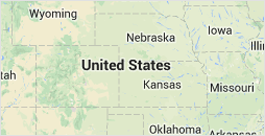Eldon Broady
PHONE NUMBER : -----------
Map

What Problems Does GraphQL Solve?
You may or may not have heard of GraphQL by now. With all the rapidly changing technologies, it's understandable if you haven't had time to read up on it or try it for your apps. The thing about scalable GraphQL is that it's actually an incredibly useful syntax and many people have started utilizing its benefits. But what is the hype around scalable GraphQL and what problems does it solve? We'll explain more in this article.
What is GraphQL?
First, let's define exactly what scalable GraphQLis. Simply put, it's a syntax and it helps describe how an application should ask for data. Typically, this syntax is used to deliver data from a server to the client requesting data. GraphQL is especially useful because it lets clients ask for the specific data they need, it can pull data from multiple sources and APIs, and it uses a type system. Now that we know a little bit more about the technology, you may be wondering what problems can be solved with these features. Click here for more information on scalable GraphQL database.
What Problems Does Scalable GraphQL Solve?
Essentially, one of the biggest problems that GraphQL can solve is that it can quickly and precisely aggregate data from multiple sources and help clients get the exact data they need much more efficiently. If you're trying to extrapolate data that needs to pull from more than one data point, you might run into troubles typically. With GraphQL, all of these endpoints are aggregated into one endpoint. It can then handle complex queries and quickly return the data you need, regardless of how intricate the query is. The typical REST model looks quite antiquated by comparison. It does a lot of extra work for the same results, and it does it much slower. Typically, it might not even be able to return the correct solution to your query. With GraphQL, this isn't an issue.
Should I Try It?
In the end, implementing a new syntax is your decision, however with GraphQL, that decision is an easy one. It's easy to program, easy to scale, and it can vastly improve the performance of the applications you use it with.
Author Resource:-
Eldon Broady writes about database technologies, graph database, and modern API tools. You can find his thoughts at GraphQL technology blog. If you're looking for a cloud-based graph database solution, visit this website.
